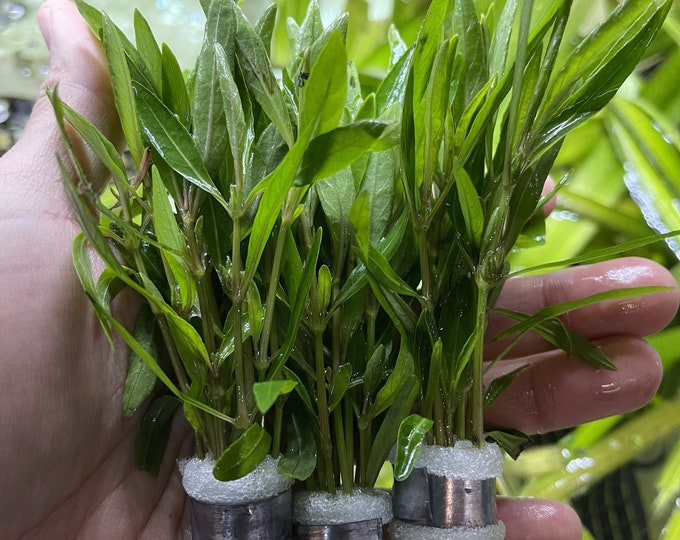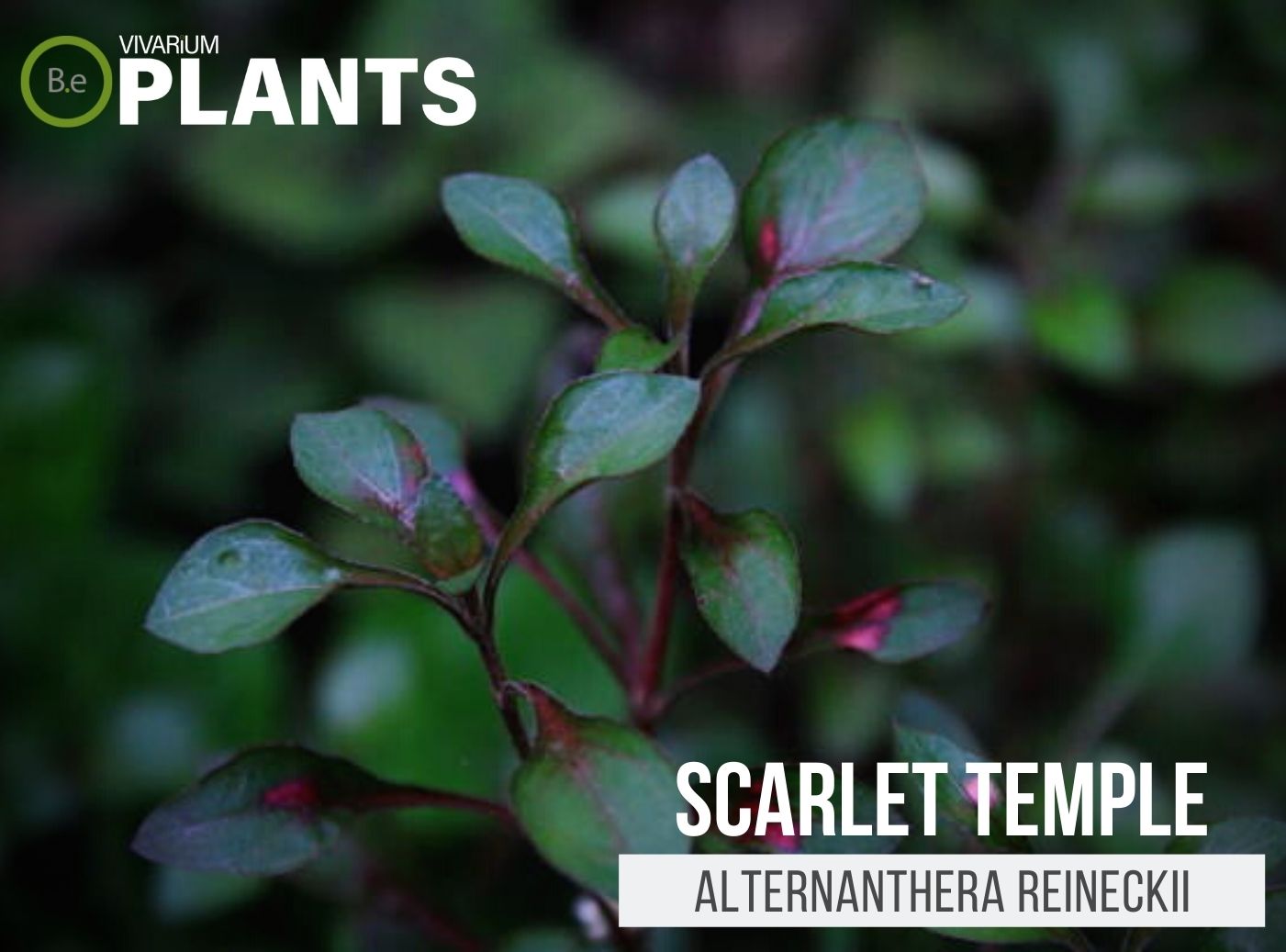Hygrophila corymbosa (Giant Hygrophila) is a type of aquatic stem plant that provides immense beauty and foliage to the home fish tank.
The plant belongs to the Acanthaceae family and is an easy-to-care-for plant that provides a great aquatic environment for your fish.
Hygrophila corymbosa makes a great background plant for larger aquariums; with its tall stem and broad leaves, it adds a great backdrop for both fish and shrimp.
Quick Stats:
Scientific Name: Hygrophila corymbosa
Family: Acanthaceae
Common Names: Giant Hygrophila, Temple Plant
Habitat: Sparsely vegetated areas, usually in slow-moving or standing waters
Height: Up to 24 inches
pH Range: 6.0 – 8.0
Temperature: 72 °F – 82 °F
What is a Giant Hygrophila?
Hygrophila corymbosa is a popular freshwater aquarium plant from Southeast Asia.
Its distinctive tall, thin stems and large, broad leaves make it an attractive addition to the aquarium.
Its bright green foliage and hardy nature mean that it will bring life and energy to any aquarium set–up.
It is a great background plant, as it can be allowed to grow up to 24 inches in height and also looks great when planted in denser groups.


Giant Hygrophila Facts
Hygrophila corymbosa are native to still or slow–moving rivers and ponds in India, Malaysia, Thailand, and Indonesia.
It is an easy-to-grow plant, and it is great for beginners due to its hardiness.
This plant is also great for aquariums with shrimp or small fry as the taller leaves provide great cover for them.
Description
Hygrophila corymbosa is a tall aquatic plant with long, thin stems and large, broad leaves.
It normally grows up to 24 inches tall and its leaves can reach 6 inches in length. Its leaves are bright green and it has an abundance of small white flowers.
The thicker stem of the plant makes it a great background plant for any aquarium.
Habitat
Hygrophila corymbosa is native to South East Asia, where it is found in slow–moving or standing waters.
Its natural habitat consists of sparsely vegetated areas of rivers and ponds. Its roots are equipped to take up both oxygen and nutrients from the surrounding water.
pH Preference
Hygrophila corymbosa is tolerant of a wide range of pH levels, which is great for beginner aquarists. It can survive in pH levels ranging from 6.0 to 8.0.
Vivarium Type
Hygrophila corymbosa is quite an easy-going species. With that in mind, it will not be too complicated when it comes to choosing the type of enclosure it is grown in. It is best to try and replicate the plant’s natural habitat as much as possible.
Doing so will make it easier to provide this foliage plant with its basic needs. The proper setup and theme of the enclosure will make a big difference to the overall look and health of the plant. Be sure to choose setups that are moist and high in humidity.
Here are recommended vivariums it will do well in:
-
- Paludariums – Half aquatic/ half terrain-based enclosure.
- Ripariums – Mostly aquatic-based enclosures with some terrain features present.
- Aquariums – Fully aquatic-based enclosure with little to no dry terrain.
Vivarium Placement
For the best results, Hygrophila corymbosa should be planted at the back of the tank, so that the stems can enjoy the most amount of light and space to grow.
The substrate should be slightly firm and covered with a layer of gravel or sand to anchor the roots.
Additionally, the tank should have adequate lighting and good circulation for the plant to thrive.
Substrate
Hygrophila corymbosa will grow best in substrates such as gravel or sand.
For an ideal aquatic substrate, it should be slightly firm to allow the plant to stay rooted and promote growth.
The substrate should also be free of debris and adequately oxygenated. The substrate should also be well drained to keep any excess water from saturating the roots.
Lighting
Hygrophila corymbosa will thrive in both high and low light levels, depending on the tank size.
It is best suited for moderate to strong aquarium lighting. This plant should be exposed to indirect lighting and not to direct light, as it may cause damage its leaves.
Buy Giant Hygrophila
When buying Hygrophila corymbosa, there are a few things to keep in mind. Making sure the plant is healthy when purchased is essential for its success in a vivarium or pond. Vegetation that is already in poor conditions will have a very hard time adjusting to new environments.
Click the image below to learn more about the current price and other relative info about this plant.
Giant Hygrophila Care and Propagation
Hygrophila corymbosa is an undemanding plant to care for. It should be kept in moderately soft and mildly acidic water.
The water temperature should be between 72–82 °F. As with any aquatic plant, it is important to keep the light levels and nutrients in the tank balanced.
Additionally, it is important to trim the plant regularly to prevent it from spreading too much and taking up too much space in the tank.
To propagate the plant, simply cut the stems and replant them.
The cut stems should be planted three to four inches apart to ensure they are evenly spaced and they take root quickly.
How to Grow
Hygrophila corymbosa is an easy plant to grow, as long as its water conditions are kept constant.
It should be planted in gravel or sand, as this provides sufficient support for its long stems and large leaves.
The plant should be allowed to float in open areas of the tank and it will soon attach itself to the substrate.
Water Requirements
Hygrophila corymbosa prefers soft, acidic water with a pH range of 6–8. There should also be enough oxygen in the water to promote optimal growth.
The water should be changed regularly and any dead leaves should be removed from the tank.
Plants Similar to Giant Hygrophila
Adding diversity to an enclosure is key to an aesthetically pleasing setup. Try mixing up the look of your vivarium with different flora that can easily co-exist in the same types of environment.
Furthermore, if for some reason you find the Giant Hygrophila hard to acquire or would like to consider something similar to this aquarium plant… Here are other stem plants you might find will do well with or in place of Hygrophila corymbosa:
Conclusion
Hygrophila corymbosa is an easy and attractive aquatic stem plant for beginners and experienced aquarists alike. Its unique tall stems and broad green leaves make it a beautiful addition to any aquarium.
It is also a great choice for tank mates, as it provides cover and food for small fish and shrimp. With the right tank set–up and proper care, Hygrophila corymbosa will thrive in any aquatic vivarium setup.
Frequently Asked Questions
To plant Hygrophila corymbosa, start by placing the stems in a substrate at least one–half inch deep. Once the stems are in place, secure them with plant weights or using substrate. After the stems are secure, make sure to submerge the plant into the aquarium, leaving only a few leaves exposed. Finally, monitor the plant‘s development best by regularly testing the water in the aquarium.
Yes, Hygrophila corymbosa is easy to grow. It is a hardy aquatic plant that can tolerate a wide range of water conditions and temperatures, making it very tolerant and easy to care for.
Hygrophila corymbosa can be grown without substrate. This type of aquatic plant can anchor itself to nearby objects like rocks or driftwood, receive its nutrients directly from the water column, and thrive.
Yes, Hygrophila corymbosa can grow in sand and will sometimes attach its roots to other plants or driftwood in the aquarium to help stabilize itself.
Propagating Hygrophila corymbosa can be done by taking cuttings and roots from existing plants. Cuttings should be 4–5 inches in length, and the roots should be planted on the substrate. Once in the substrate, make sure the plant is receiving adequate light and keep the substrate moist.




